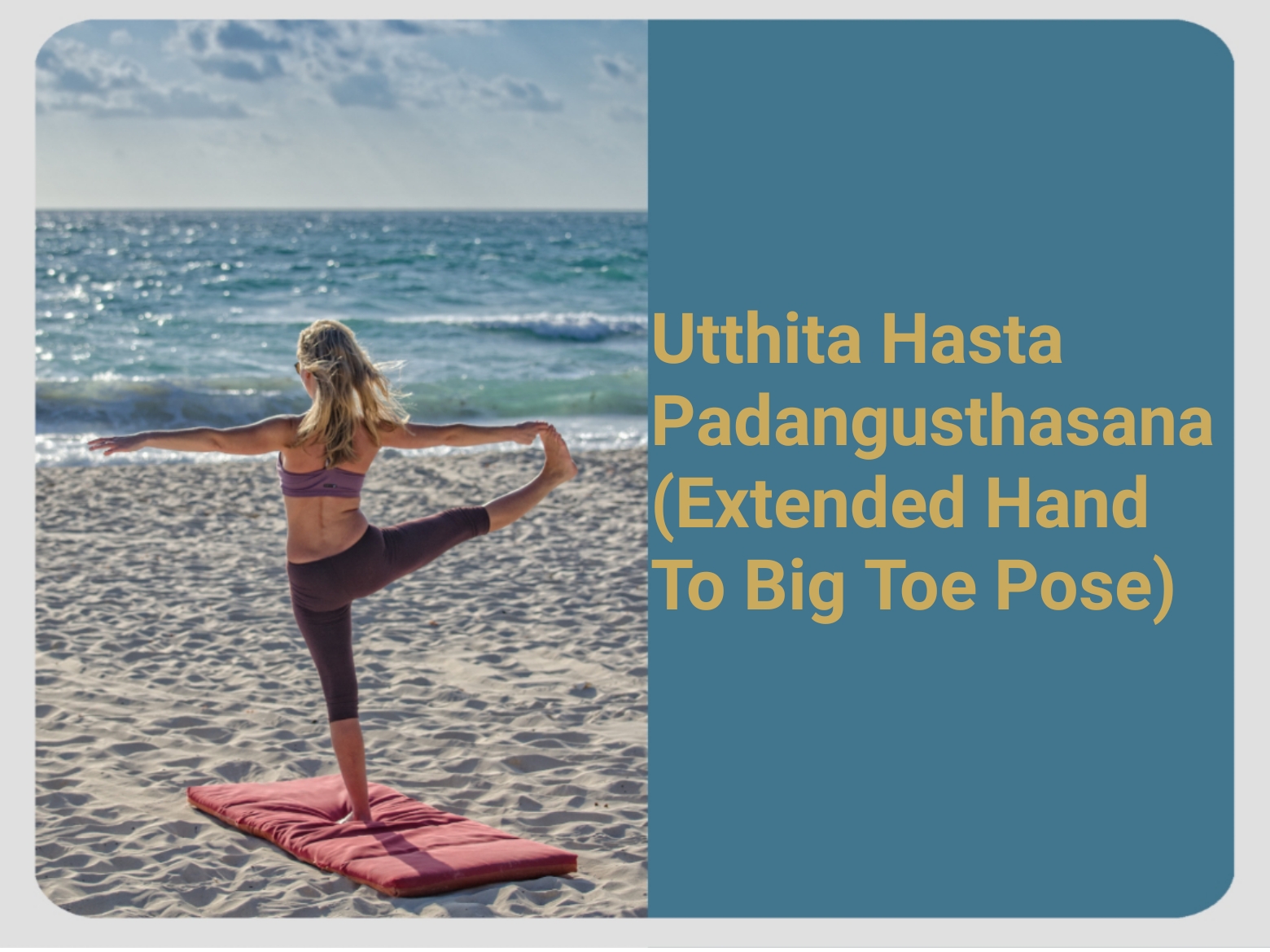Utthita Hasta Padangusthasana
Utthita Hasta Padangushthasana consists of four words – Utthita, Hasta, Pada and Angustha. In which Utthita means raised, Hasta means hand, Pad means foot and Angushtha means big toe. Its complete meaning is to raise the hands and hold the toes.
Uthita Hasta Padangushtasana is a standing asana. This asana is a balancing asana, that is, it is useful for learning how to maintain balance. Doing this regularly helps in concentrating.

Steps of Uttitha Hasta Padangusthasana
♦ First of all, take a deep breath and stand in Tadasana; Stand straight with your feet firmly aligned and at shoulder level. The arms on both sides are in a comfortable position.
♦ Now make the body calm and relaxed.
♦ Keep your eyes open and focus your vision on any point in front.
♦ Now bend the right leg at the knee and bring the thigh as close to the chest as possible. Place the right hand on the outside of the bent leg and hold the toe.
♦ Now slowly straighten the right leg and try to bring it closer to the body by slowly pulling it up.
♦ For balance in the exercise, raise the left arm to the side and place the hand in Chin or Gyan Mudra.
♦ In the final stage, stop as per your capacity, now slowly bend the right knee, loosen the grip on the toe and slowly bring the toes down.
♦ Make your hands relaxed, now repeat the same exercise with your other leg.
♦ Respiratory position: Inhale while you hold the toe with your hand.
♦ While straightening the raised leg, exhale and then inhale.
♦ Exhale while pulling the leg up, take a deep and long breath in the final position.
♦ Exhale as you return to the starting position.
Benefits Uttitha Hasta Padangusthasana
Improved Balance: This pose enhances balance and stability as you stand on one leg.
Strengthened Leg Muscles: It strengthens the muscles in your standing leg, including the quadriceps and calf muscles.
Enhanced Flexibility: The asana increases flexibility in the hamstrings and hip flexors.
Improved Posture: Practicing this asana helps in maintaining proper posture and alignment of the spine.
Enhanced Concentration: Balancing on one leg requires focus and concentration, which can help calm the mind.
Core Strength: The engagement of the core muscles is essential in this pose, which leads to a stronger core over time.
Hip Mobility: It promotes mobility and flexibility in the hip joint, which can be especially beneficial for those with tight hips.
Stress Relief: The meditative aspect of this pose can reduce stress and anxiety.
Better Digestion: Regular practice can stimulate abdominal organs, potentially aiding digestion.
Increased Circulation: The stretching involved can help improve blood circulation throughout the body.
Other benefits-
1) The curvature of the body is removed.
2) Back or waist pain, joint pain, nerve pain, foot and knee diseases are cured.
3) This Utthita Hasta Padangusthasana is especially beneficial for a person whose legs tremble, or who works while standing.
4) This asana removes obesity.
5) This Utthita Hasta Padangusthasana is also beneficial in increasing the liver and spleen.
6) Diabetes and muscle problems are cured by this asana.
Precautions
The practice of this asana is a little difficult, so proceed slowly towards each step and do not hurry in any way. Avoid practicing this asana if you have pain in hands, elbow injury and any problem in shoulder.
Apart from this, do not practice this asana even if you have any problem in your back or legs. Women should not practice this asana during pregnancy and menstruation.
Frequently Asked Questions
Utthita Hasta Padangushthasana is a yoga asana in which you try to raise one leg and show it.
Utthita Hasta Padangusthasana is done standing, and you hold your toes with one hand.
This asana strengthens our leg muscles, maintains balance, and promotes mental stability.
To perform Utthita Hasta Padangusthasana, standing straight, lift one leg and hold its toe, then slowly straighten the leg.
Yes, this asana can cause injury and stability problems if done without proper structure and restraint, so learn it with a yoga guru. What is Utthita Hasta Padangusthasana?
How is this asana done?
What are the benefits of this asana?
How is this asana done?
Should this asana be done with any special caution?
Read Also
- Benefits of Kapalbhati | Steps | Precautions
- What are the Benefits of Sheetkari Pranayama and How to Do it?
- How to do Surya Namaskar (Sun Salutation)? Benefits & Steps
- Kurmasana (Tortoise Pose): How to Do it, Benefits & Contraindication
- Vakrasana (Half Spinal Twist Pose) How to Do it and Benefits